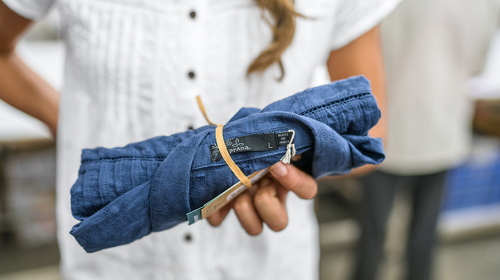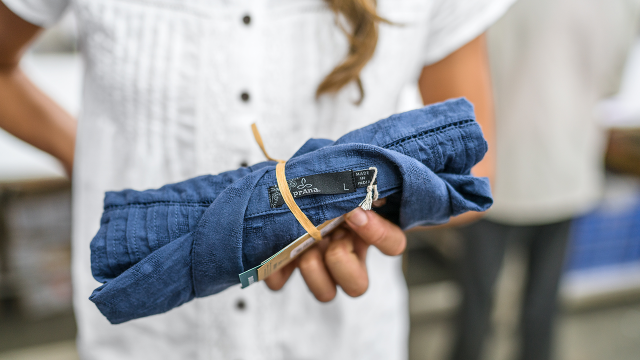If you glanced at your garbage can or recycling bin right now, what would you find inside? Chances are, it’s a jumble of plastic and cardboard—and you’re not alone. According to the EPA, nearly 30 percent—a whopping 76.7 million tons—of municipal waste is comprised of packaging, things you rip, break, and tear apart, then immediately toss aside. In a recent op-ed, Salida Mountain Sports founder Nate Porter took the outdoor industry to task for its overuse of packaging materials. Based on the chatter when OBJ posted the story on Facebook, he’s not the only one concerned about these issues. And he’s not alone in looking for solutions. You’re likely to see less packaging waste come along with your outdoor goods as creative sustainability initiatives increase across the industry.
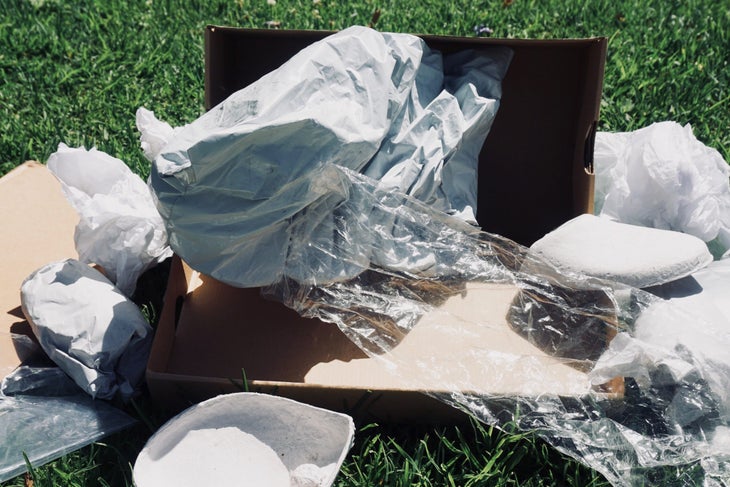
“Any company that wants to reduce its carbon footprint, address water consumption, or anything else— you’re not going to be able to get tremendous gains without at least doing something about packaging,” said Adam Gendell, associate director of the Sustainable Packaging Coalition. “No one’s going to solve all of our environmental issues by just looking at packaging, but at the same time, no one’s going to be able to solve all of our environmental issues without including packaging.”
For some brands, sustainability is central to their core ethic. “We were founded as a triple bottom line business, so we measure our success as it relates to the environment, our social impact, and our financial impact,” explained Kelly Milazzo, VP of operations for Toad&Co. “When we look at our environmental impact, it’s kind of soup to nuts.” In a bid to reduce waste, the company recently launched a partnership with sustainable shipping company LimeLoop, who use reusable mailers made from upcycled billboard material.
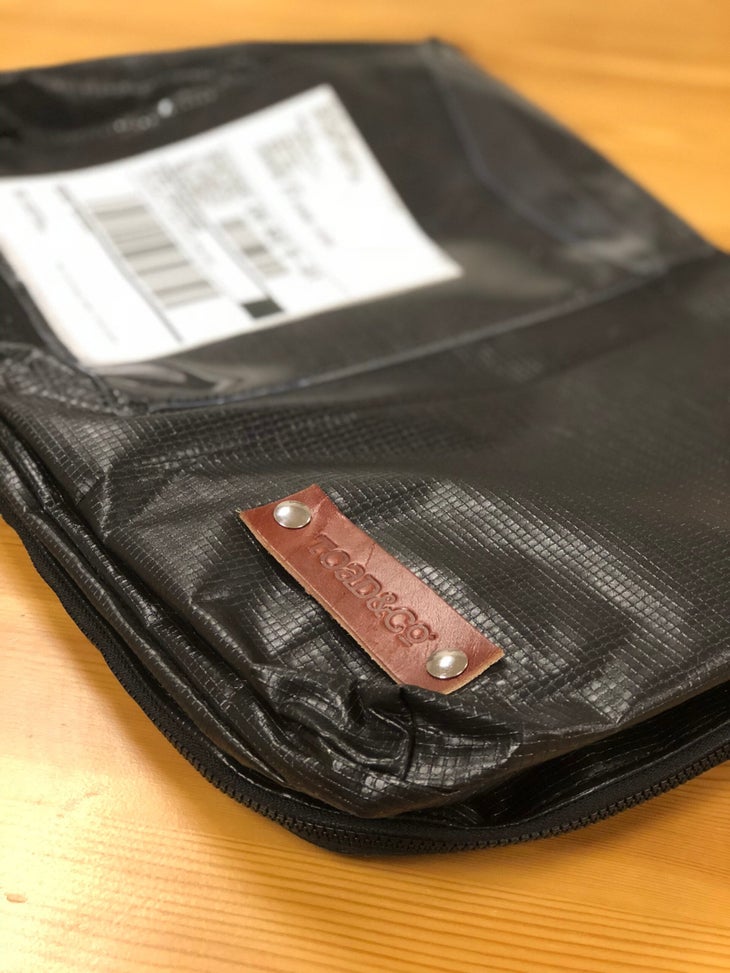
Small Steps Lead to Big Changes
No matter the intention, it’s not always easy to enact change. Complex supply chains involving a multitude of vendors and facilities, each with their own capabilities and limitations, can vex larger operations; smaller brands face other roadblocks.
Shawn Parry, VP of marketing and product development for Teton Sports, said that to find more sustainable packaging options, the company was forced to invest in a year’s worth of materials up front. He also said that because his company is small, change is incremental. Last year, the brand began retooling its sleeping bag fill; this year its shell materials. It’s also rebuilding its entire packaging system, step by step. Parry likened it to a kid plunking pennies into a piggy bank. “Every time we want a new bike, we have to save up.”
There’s also the challenge of adequately protecting consumer goods, a job that’s long been entrusted to polybags. Back in 2014, Patagonia conducted a case study to see if it could reduce its plastic use by eliminating the bags. The results were disappointing. “We found that about 30 percent of the products were damaged beyond the point of being sellable,” explained Matt Dwyer, senior director of materials innovation and development. “The best thing we can do is produce clothing that’s going to last a long time, and if 30 percent of our product is getting damaged in the distribution process, we’re failing.”
The brand was able to make a few impactful changes spurred by the study, related to bag size and packing. “If my mom had told me that by folding my clothes better, I could save the world, I wouldn’t have believed her,” Dwyer laughed. “But it turns out that by folding our clothes better at the factories, we use 30 percent less plastic in our polybags.” He anticipates that by this fall, every polybag they use will featured recycled content; this will bump to 100 percent recycled content in the near future.
Taming the Polybag Beast
When it comes to polybags, most would argue that using recycled content is great, but using no bags at all is even better. prAna found a way to achieve this sustainability coup with a multi-year polybag reduction initiative driven by a dedicated group of employees who felt there had to be a better way. “We are a brand that believes in taking positive steps toward change, yet if all of our product comes in a polybag, what is that initial experience telling our customer?” asked director of sustainability Rachel Lincoln. “Small choices equal big change, and that’s kind of where that idea came—how can we make a choice every single day to do something different and find a different standard?”
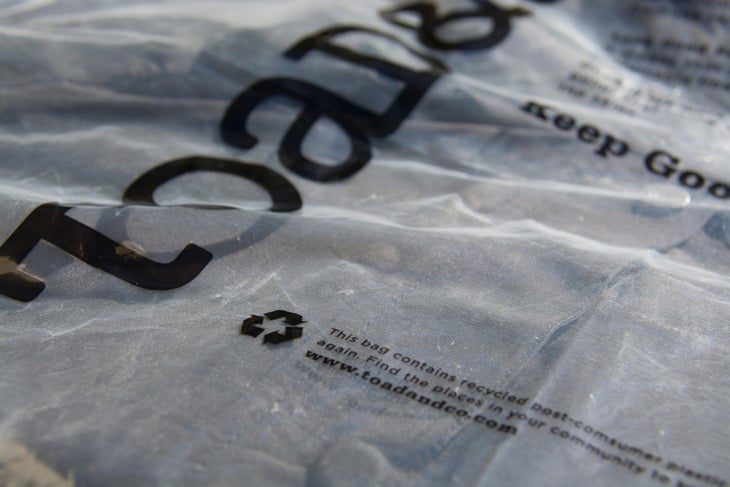
After extensive testing, the prAna team realized that they could eliminate most polybag use by rolling items, then tying them with compostable raffia. Items could then be packed in one large box lined in plastic to prevent moisture damage. They developed training materials and worked with each component of their supply chain to ensure the process was streamlined. Their efforts paid off. “Just in 2018 alone, I think it was over 26,000 tons of polybag plastic that we saved,” said Lincoln. “That’s equivalent to two adult-size elephants.”
Strength in Numbers
While prAna’s success may not be replicable for every brand, the push for packaging sustainability has never been stronger. The Outdoor Industry Association’s Sustainability Working Group and the Sustainable Apparel Coalition are working on best practices.
One of the most prominent tools in this regard is the Higg Index, a sustainability scorecard. This summer, the Sustainable Apparel Coalition will relaunch its Brand & Retail Module, which will offer adopters ways to measure and seek improvement in packaging.
Even without a codified set of best practices, individual strategies are emerging. Lincoln suggested that more brands tap into the Teton Sports micro model. “Take one topic, go after it, be tenacious, don’t take no for an answer, ask a lot of whys, and then move on to the next thing once you’ve tackled it.”
On a broader scale, Gendell advised brands to adopt a “three pillar” system that addresses materials sourcing (using recycled, biodegradable, and compostable materials), optimization (reducing materials and volume), and recovery (ensuring materials are easily recyclable). This involves interrogating the supply chain.
“Most folks probably don’t even know where their polybags come from, let alone what they’re made out of,” said Dwyer. “The easy button for any big brand is to just let the factory do it—let them pick the materials, let them even help with the design, certainly let them pick the boxes and polybags.” Instead, the Patagonia team suggests putting in time to build personal relationships with suppliers.
Lincoln takes this a step further by advocating for the concept of “non-competitive collaboration,” allowing brands to share ideas, resources, and even purchasing power for the greater good. She pointed out that prAna’s recent move to 100 percent organic cotton was sparked when a competitor introduced them to a new vendor. “We have to be able to talk about those things in a non-competitive way or we can’t move the industry forward,” she said. “Together we’re stronger—and we have to believe that, enforce it, and encourage it.”
Cooperation is also key to magnifying the impact of initiatives like LimeLoop’s reusable mailers. Milazzo said that initial testing shows a shelf life of 2,000 shipments for each bag. She suggested that if more brands adopt the service, the impacts could be huge. “I think it’s essential that we as a business community find a solution to packaging,” she said. “I think we’re in a powerful position to make change.”
Perhaps the brightest glimmer of hope, then, is collaboration. “The power of one is strong, but the power of many speaks volumes,” said Lincoln. “If we can come together and find a way to leverage that louder voice, then the sky’s the limit.”
